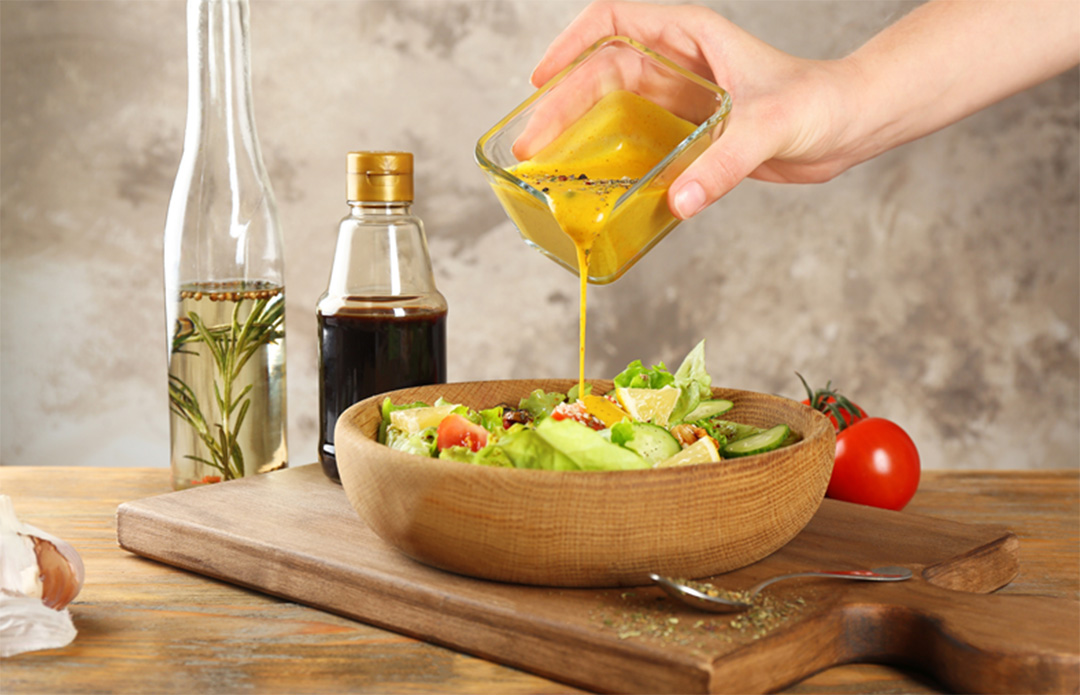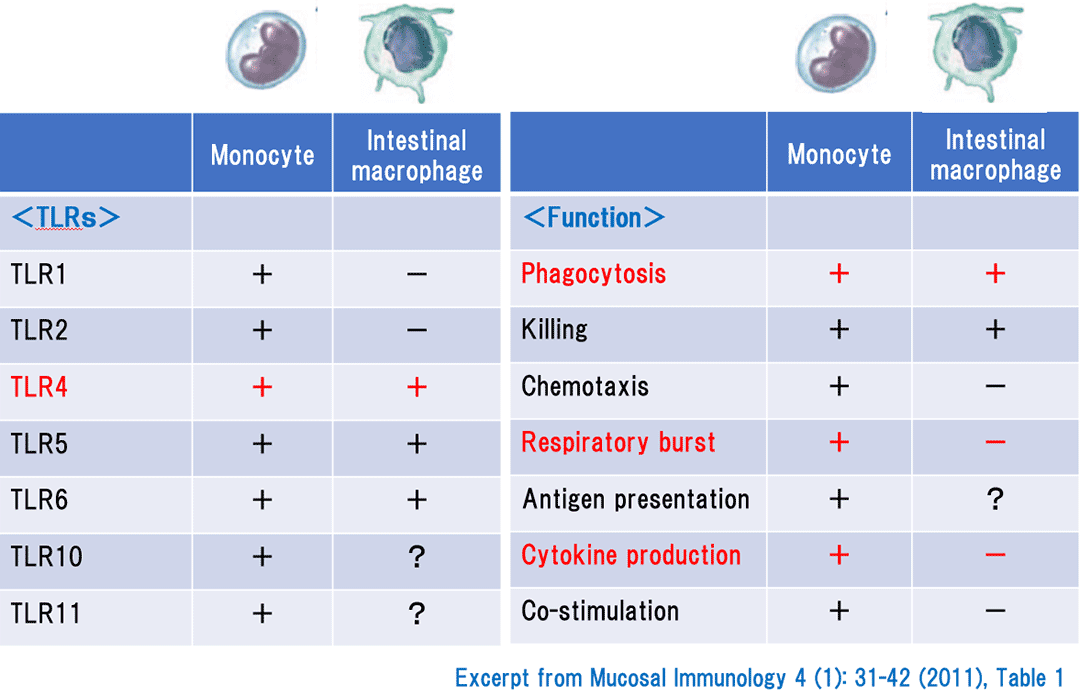




Are you aware of xanthan gum, a popular additive used in the preparation of foods to increase viscosity and induce gelation? It is a natural polysaccharide produced by a gram-negative bacterium called Xanthomonas campestris. It also has applications in cosmetics, toothpaste, and the preparation of foods (dressing, thickening sauces, etc.).

By the way, xanthan gum produced by Xanthomonas, a gram-negative bacterium, contains LPS. Many people continue to associate LPS with inflammation, but the fact that xanthan gum has been found to be safe to consume by long-term studies also proves the safety of LPS contained in the xanthan gum.
In fact, even Xanthomonas LPS can cause an inflammatory reaction when injected directly into the blood. In that case, why is xanthan gum that contains LPS considered safe? This is because LPS is neither toxic nor proinflammatory when consumed or applied. Let me explain this point.

Table 2 compares the characteristics of blood monocytes (macrophages in the body) and intestinal macrophages (macrophages in the digestive tract) (*1). Intestinal macrophages possess the receptor TLR4, which responds to LPS but does not produce reactive oxygen species or cytokines. The Langerhans cells in the skin, unlike the dendritic cells in the body, do not produce cytokines in response to LPS stimulation (data not shown) (*2). In other words, the cells in the body and those in the skin and gastrointestinal tract demonstrate different responsiveness to LPS. Because the digestive tract and the skin are naturally exposed to environmental bacteria and indigenous bacteria, respectively, these bacterial components do not cause inflammation in them. Thus, the belief that the phenomenon that occurs with LPS injections also occurs with eating is incorrect. Xanthan gum is the most obvious example of this case.
(*1)Intestinal macrophages and response to microbial encroachment, Mucosal Immunology 4 (1): 31-42 (2011)
(*2)Differential Expression and Function of Toll-like Receptors in Langerhans Cells: Comparison with Splenic Dendritic Cells, J Invest Dermatol 122: 95-102 (2004)

DynaxT bldg. 2F, 2217-6
Hayashi-cho, Takamatsu-shi,
Kagawa-ken,
761-0301 Japan
TEL : +81-87-867-7712
FAX : +81-87-867-7737
Your personal information on this site is protected by SSL.